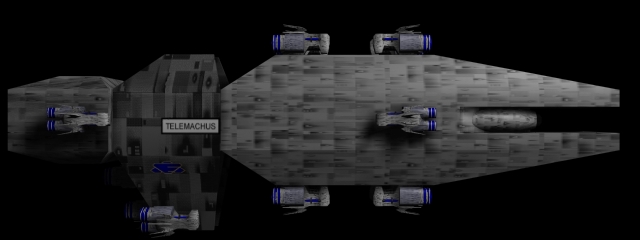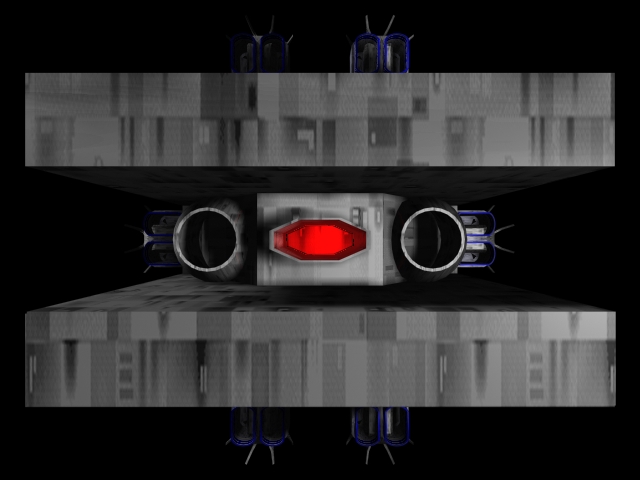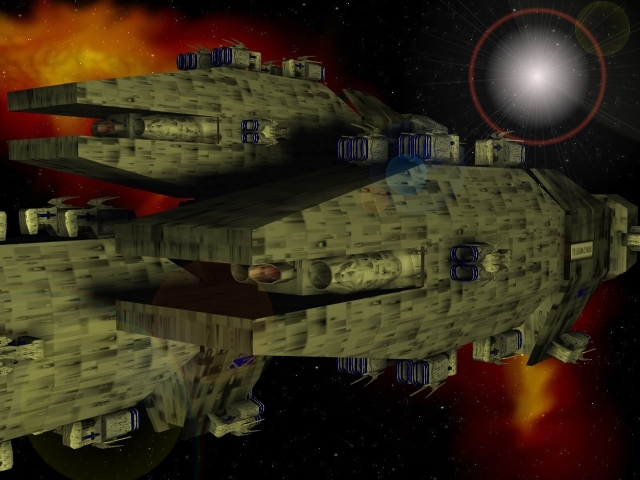|
|
|

| CLASSIFICATION: | Star Tank (Aircraft Carrier/Star Tank) |
| LENGTH: | 500 metres |
| TONNAGE: | 30 million tonnes |
| MANOEUVERABILITY: | Class B |
| CREW: | 80 |
| TROOPS: | 0 |
| FIGHTER(s): | 8 Internal Docking Mechanisms |
| POWER SOURCE: | 6 Tokamak Corp. Ultima 3000 Gravimetric Fusion Reactors - 1,000,000 Terawatts |
| DURATION: | 24 months before refuelling |
| WEAPONS: | 2 Heavy GED Laser Cannons - 16 Helios class Ion Plasma Cannons |
| DEFENCES: | 10 to 15 metre Advanced Daemon Re-Enforced Armour - EM/Gravimetric Field Defence Grid - FLAK Anti-starfighter Grid - IMPS Defence Satellites |




Pictured is the EAS Telemachus, the first Polyphemus put into service.